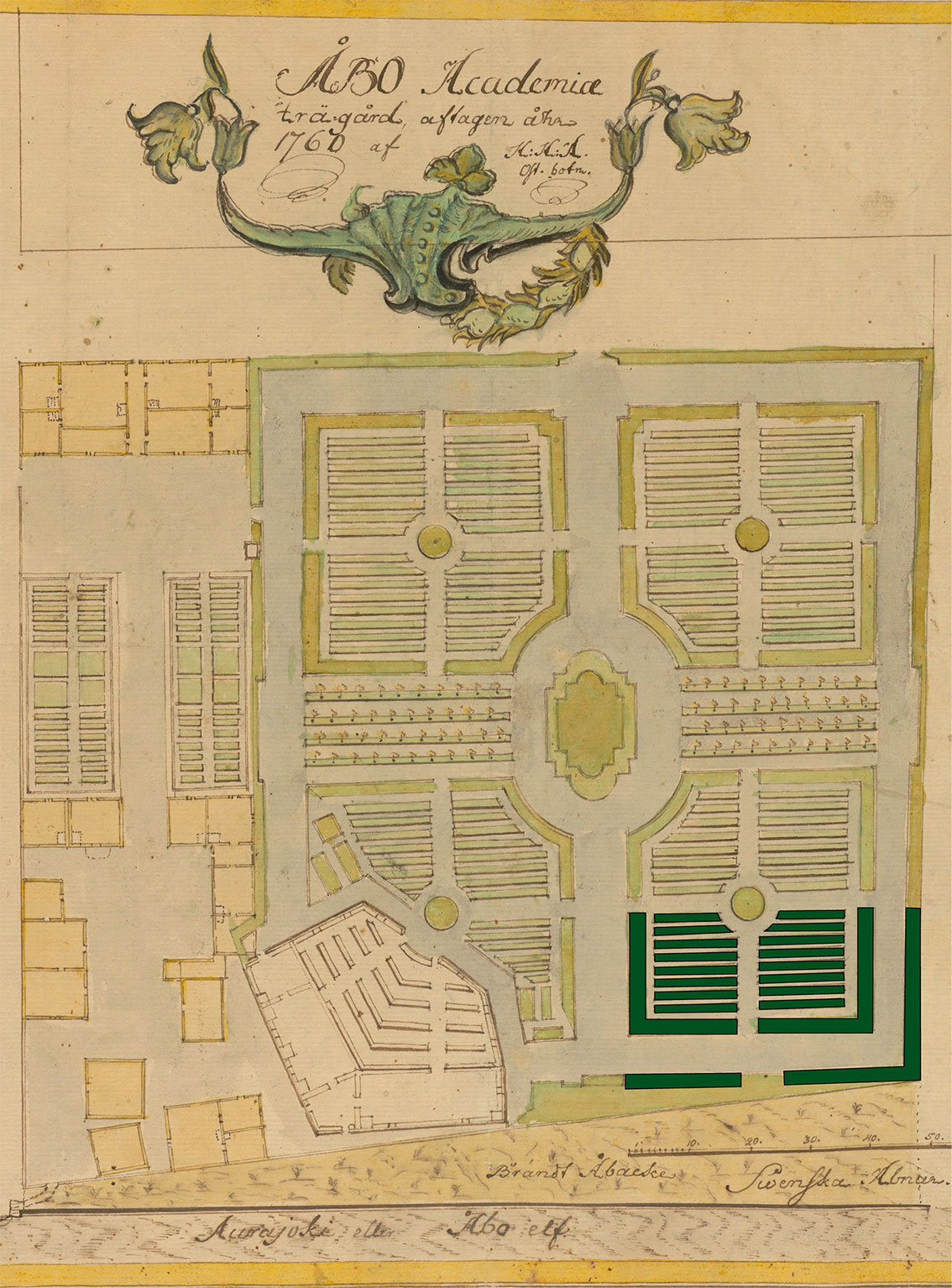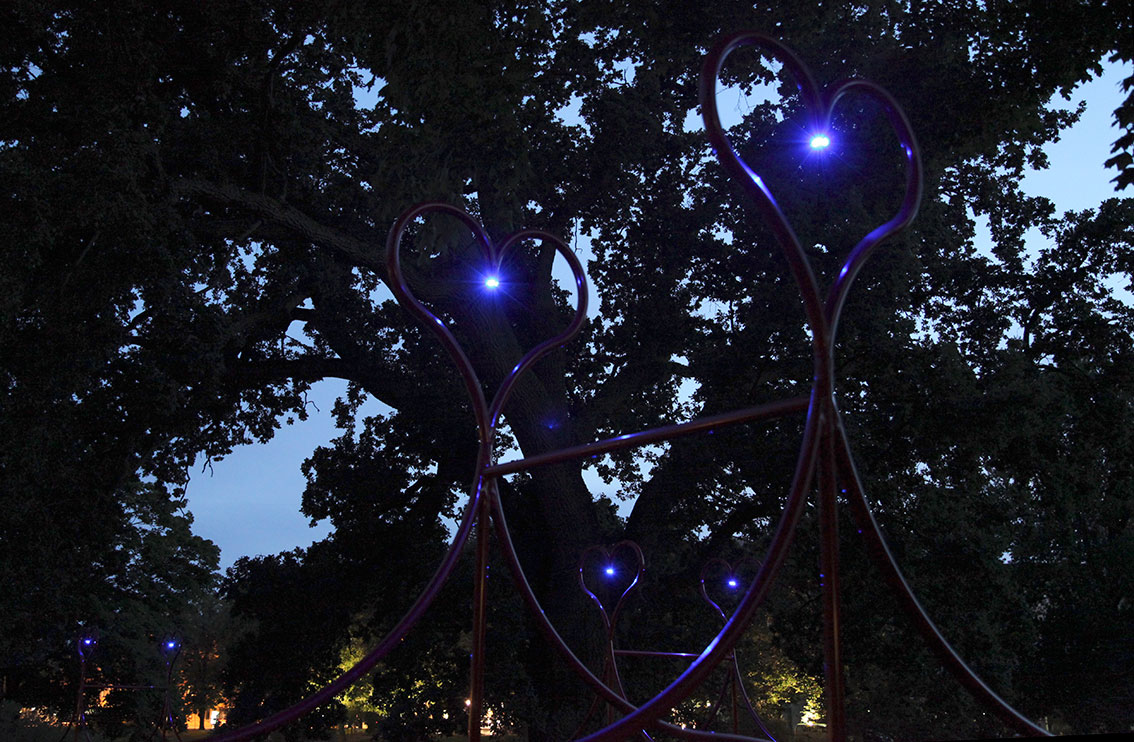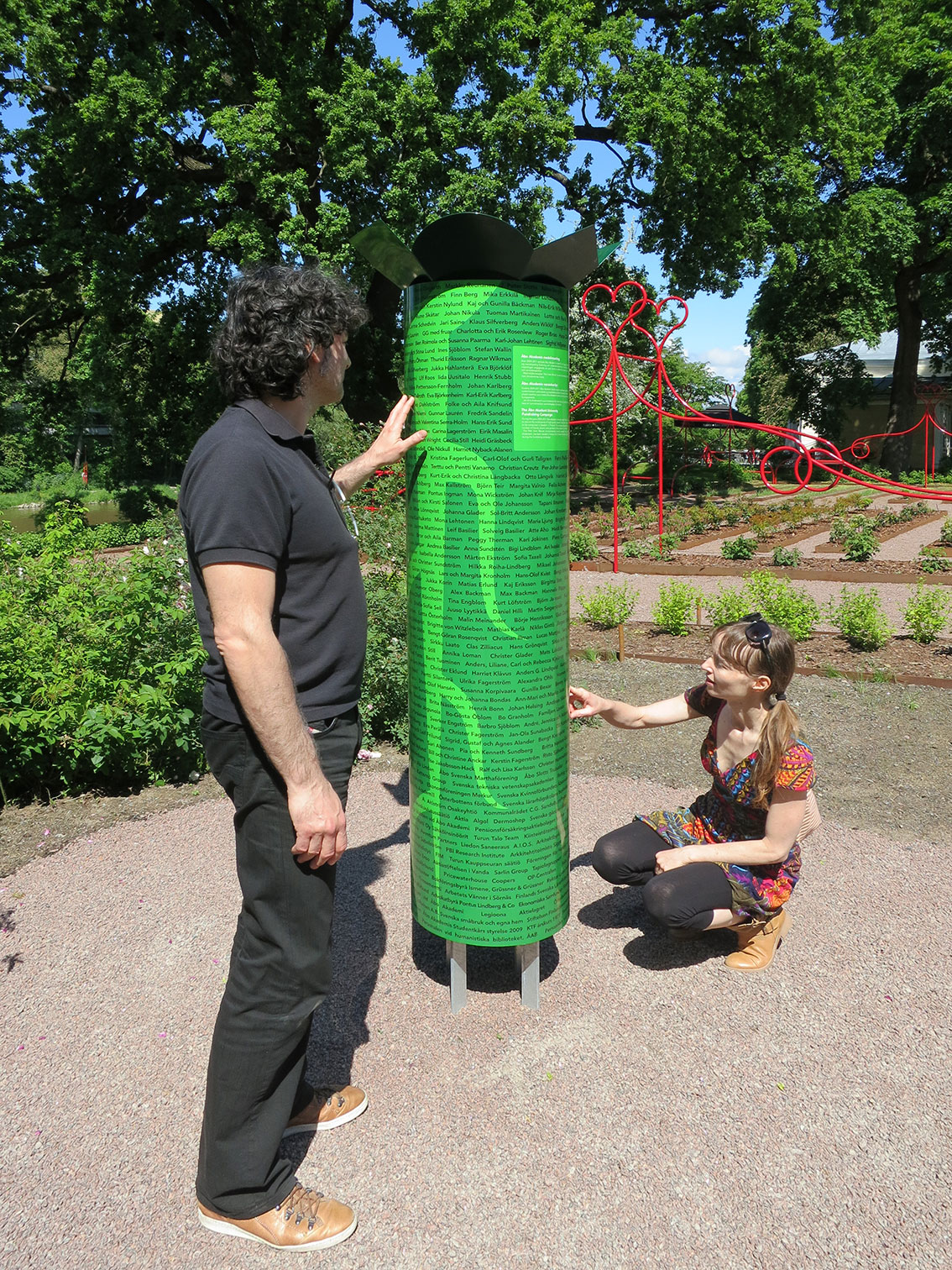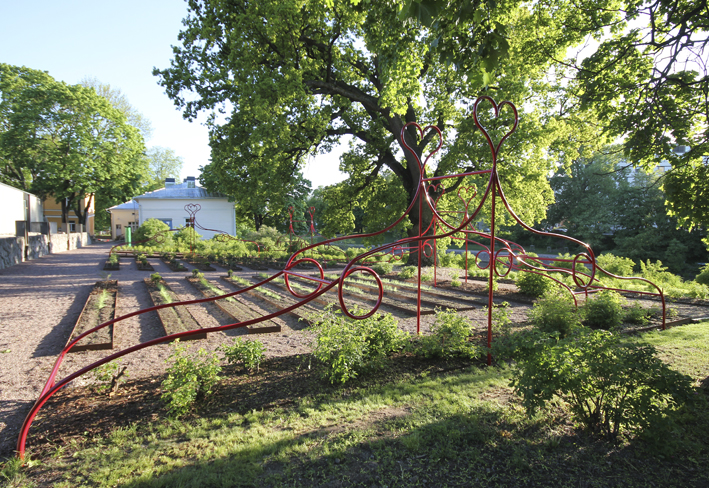Pehr Kalm Revival
Environmental Artwork, 2012
The environmental artwork, Pehr Kalm Revival, has been created in honour of all those who made a donation during the Åbo Akademi University fundraising campaign of 2009–2011. The work recreates one eighth of the botanical utility garden founded by Pehr Kalm and Professor Johan Leche on this very location in 1757. A contemporary map of the garden has been used as the point of departure for the artwork.
Pehr Kalm was a renowned botanist and a student of Carl Linnaeus. He made a famous expedition to North America in the years 1748–1751 and brought back plants to Finland. He experimented with cultivating these, partly on this spot and partly in his garden at Sipsalo Farm on the island of Hirvensalo in Turku.
The aesthetic aim of this environmental artwork is to make visible this almost forgotten, yet important layer of history. When the work was started, no traces of the old garden were discernible.
Pehr Kalm Revival comments on the strong juxtaposition between rational and romantic thinking which was prevalent in the Enlightenment movement during the time of Kalm. Under the organically shaped pergolas, which symbolise soft, imaginary and irrational thinking, can now be found the so-called ‘honorary doctoral roses’, dedicated to the honorary doctors of Åbo Akademi University from 2002–2011.
The original garden was surrounded by a hedge to keep animals out. Kalm studied the use of so-called ‘living fences’ instead of the more traditional plank fences which were harmful to forests. The hedge now growing in the outermost plant tubs will gradually be replaced by descendants of the original hawthorn bushes (Crataegus grayana) brought by Kalm from America. The hedge will be cut into strict geometrical forms to represent rational thinking. In the initial plan for the art garden, the plant tubs were to be surrounded by a sculptural pergola structure, to represent the fact that geometry was considered to be superior to organic nature. As work progressed, the form of the artwork was changed, due to interventions from Turku city architects, but the original idea is shown in the sketch displayed.
Since only a portion of Pehr Kalm’s garden can be recreated, because the Sibelius museum now occupies most of the area of the original garden, it is impossible to achieve a reconstruction of all the contemporaneous plants. Instead, the tubs in the middle of this work contain plants, which were named after Kalm. The plants have been selected by Maarit Heinonen, MSocSc and Aaja Peura, MA.
The Kalmia genus of mountain laurel was named after Kalm. It includes several species, such as Kalmia angustifolia, latifolia, microphylla and hirsuta. Kalm was deeply honoured that Linnaeus named this genus after him.
The original Kalmia angustifolia var. angustifolia and Kalmia polifolia Wang in the present garden were ordered from Montreal, Canada. The Kalmia latifolia and Kalmia latifolia var. microphylla were acquired in Finland.
Kalm understood the practical importance of meadows and experimented with cultivating meadow plants. The arctic brome, Bromus kalmii, which originates from the American prairie, has also been named after Kalm. Its seeds were obtained from North America. The St. John’s wort, Hypericum kalmianum, is likewise a native to the American prairie; its seeds came from the University of Helsinki Botanical Garden.
Scarlet beebalm or bergamot (Monarda didyma) was earlier known under the name of Monarda kalmiana. The seedlings here come from the University of Helsinki Botanical Garden and from the herb garden at Pukkila Manor in Kaarina, while some have been grown from seeds.
Musk strawberries (Fragaria moschata), which were moved here from Sipsalo Farm, grow under the oak, which according to legend, was planted by Pehr Kalm himself.















